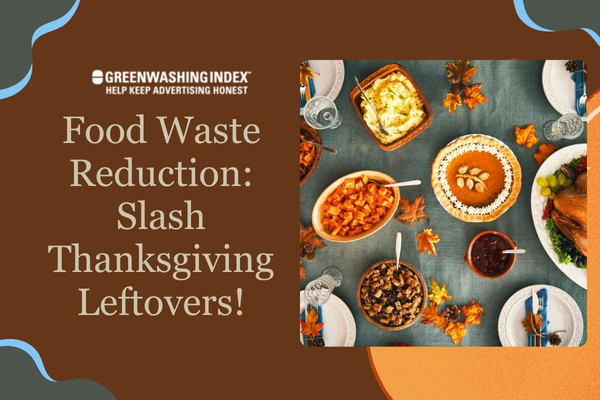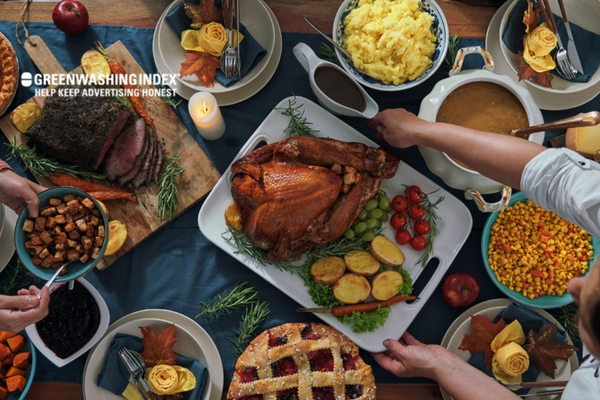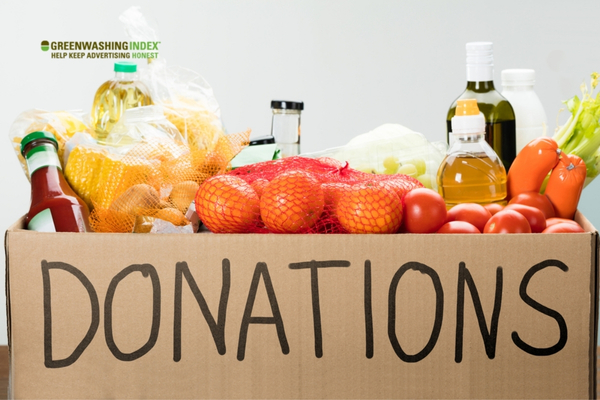

Do you ever find yourself tossing out heaps of uneaten turkey and sides the day after Thanksgiving? If yes, then this little guide is just what you need. Imagine turning your holiday feast into a victory for the planet. That’s right—it’s time to tackle food waste reduction head-on during our beloved turkey day, and I’m here to tell you just how. Get ready to transform your Thanksgiving from wasteful to wonderful with some simple yet effective tweaks.
Reducing food waste during Thanksgiving isn’t just kind for your wallet; it speaks volumes about caring for our world. To start with, scope out what everyone likes before prepping that massive meal—it’s all about cooking smartly!
Use every last carrot and turn leftover pumpkin pie into tomorrow’s tasty treat. Be the hero who shows up without excess bags of wilted salad nobody asked for; instead, bring along precise portions and enjoy a feast where nothing goes to waste.
Thanksgiving is a time for family, friends, and of course, feasting. But with all the good times, there’s also a chance we end up with too much food on our hands. That can lead to waste, and nobody wants that. So let’s dive into how to plan your meal with food waste reduction in mind.

Knowing what everyone likes to eat is key when you’re hosting Thanksgiving dinner. Why? Well, if you cook dishes that your guests don’t like, they probably won’t eat them. And if they don’t eat them, that food ends up in the trash.
So here’s what you can do:
By getting this info early on, you’ll have an easier time making just enough for everyone – no more and no less – cutting down on leftovers and saving those perfectly good holiday foods from going to waste.
Portion control isn’t just about eating healthy; it’s also super important for reducing food waste during Thanksgiving meals. Too much food on the table means too much food possibly ending up in the garbage once everyone’s full.
Here are some tips on nailing those portion sizes:
Remember these numbers as starting points though! You know your group best – tweak as needed!
These thoughtful steps will help ensure that every last bite has its place: in bellies rather than bins! By sticking close to these suggestions, not only will there be less waste but also fewer hours spent fussing over unnecessary extra cooking leaving more time to enjoy this eco-friendly feast!
Also Read: Food Waste Reduction: Simple Tips for Major Impact
When it comes to prepping for a big Thanksgiving celebration, most of us think about all the good food and company. But I’m here to share a little secret with you – smart shopping can make your holiday even better! Not only will it help you save money, but you’ll also join the fight against food waste. So let’s talk about how we can do this with some simple yet effective steps.

Firstly, we’ve got to chat about making a shopping list. You might wonder why it’s such a big deal. It turns out that having a detailed checklist is like having a road map for buying just what we need and nothing more. When I stick to my list, there’s less chance I’ll end up with extras that go bad before they can be enjoyed.
Here’s what I do:
This way, my ingredient checklist matches my cooking plan like two peas in a pod. And because every bit of food has its place on my Thanksgiving table or in specific recipes afterward, very little goes to waste.
Now let’s move on to where we shop! Ever thought about how much good we could do by picking where we buy our Thanksgiving ingredients? Buying from bulk bins and local farmers markets is not just trendy; it makes sense for our wallets and our planet.
When I swing by bulk bins at grocery stores:
At farmers markets:
I love this approach because it feels personal. Plus, supporting local producers feels right; their fruits and veggies didn’t travel halfway across the globe using up fuel. If everyone bought just enough fresh produce for their celebrations rather than overstocking “just in case,” imagine how much less would end up being thrown away!
Smart shopping is something anyone can try out this Thanksgiving. Doing things like creating an ingredient checklist aligns well with our goals for food waste reduction during holidays like these! This strategy paired with choosing where you buy from sets you up for sustainable celebrations with minimal leftovers needing cooking tips later on.
Also Read: New Nordic Diet Guide: Embracing Health and Sustainability
When we gather with our loved ones for Thanksgiving, it’s a time to share good food and give thanks. But it’s also important to think about how we can make our feast in a way that doesn’t waste food. By being smart about how we cook our Thanksgiving dishes, we can enjoy a delicious meal and help our planet at the same time.

Cooking with care doesn’t just make our food taste better; it can also play a big part in food waste reduction. I like to use some cooking techniques that help keep all the flavors while making sure I don’t throw away good food.
As I’m preparing for Thanksgiving, following these methods means my holiday feasting is more eco-friendly, because I’m reducing waste right from when I start cooking.
I’ve come to see that almost everything has more uses than what meets the eye—especially when cooking this festive meal!
By using these parts that are often thrown out, not only do we reduce waste but also create new tasty dishes and side options! By thinking ahead about using everything — from peelings to bones — my Thanksgiving becomes an example of sustainable celebrations.
As someone who loves both feasting and being kind to Earth, focusing on food waste reduction through careful preparation methods turns holiday leftovers into opportunities rather than something that needs to be tossed away. My approach ensures my celebrations are as eco-friendly as they are enjoyable.
Also Read: Mediterranean Diet: Your Heart and Earth-Friendly Guide
Thanksgiving is a special time when I get together with family and friends, share what we’re grateful for, and enjoy a feast. Yet, every year after the big meal, I see lots of food left on my table. So, I’ve learned how to be clever about saving these goodies. It means less waste and more tasty meals for me later on!
I like to think of leftovers as ingredients for new creations. Turning what I have into something different is fun and helps in food waste reduction.
For example:
It’s not hard at all – just mix things up, cook safely, and enjoy your creations!
Storing food right helps us keep our leftovers fresh longer which means more yummy meals without waste.
Here’s what I do:
And here are some extra tools:
These steps help me reduce food spoilage after Thanksgiving – making my celebration not only joyful but also eco-friendly!
Also Read: Maggots in Compost: Why They’re Actually Good!
Thanksgiving is a time of abundance, and often, this abundance means we’re left with more food than we can eat. But I believe Thanksgiving should also be about giving and conscious living. That’s why it’s essential to think about food waste reduction in a way that benefits both people in need and the environment. Below are some ways to do just that.

When Thanksgiving ends and I’ve got more food than I can handle, I think it’s a great idea to spread the holiday cheer further by donating. Lots of places take unopened and uncooked foods, even prepared meals if they’re handled right. Here’s how I go about it:
I make sure the food is safe to give away – no one wants to get sick from spoiled leftovers! And it feels good knowing someone else is getting joy from something I might have just thrown away.
Composting leftover scraps from Thanksgiving is a solid step toward food waste reduction. It’s like giving back to the earth! Starting isn’t as hard as some might think. Below are simple steps anyone can follow:
By starting with these basic steps towards sustainable celebrations through composting this Thanksgiving, massive amounts of would-be waste could be turned into something useful for gardens all over!
As Thanksgiving draws near, many of us get ready for a day filled with joy, family, and lots of food. But in the excitement, it’s easy to forget about the impact our feast might have on the planet. Food waste reduction is not just good for the environment, it’s also kind to our wallets.
By planning effectively, shopping smartly, cooking mindfully, storing leftovers properly, sharing our bounty with others, and even starting a compost bin at home we can have an eco-friendly Thanksgiving that is just as festive and more sustainable.

Don't let aphids, slugs, and caterpillars ruin another plant. Take back control with simple, natural methods that actually work.